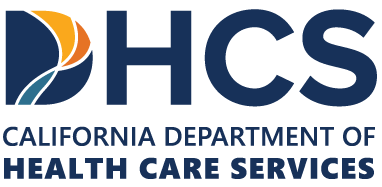Opioid misuse has reshaped the landscape of public health in the United States, touching urban, suburban, and rural communities alike. In cities like Los Angeles—where access to prescription medications is widespread and stressors are high—opioid addiction has become an ongoing crisis that affects individuals, families, and the healthcare system at large. Many people still associate […]
Many individuals wonder “What is ambulatory detox?” and if it’s an effective method of treatment program for alcohol or substance use disorder. Ambulatory detoxification allows the patient to undergo detox while living at home. This article will discuss everything you need to know about ambulatory detox, including the steps involved in the treatment process and criteria needed to undergo this type of detox.
NUMA Recovery Centers is a Los Angeles-based rehabilitation and detox center that offers comprehensive addiction treatment programs for individuals struggling with drug and alcohol addiction. Whether it's inpatient or ambulatory detoxification, we provide a continuum of care and support that guides individuals through every step of their recovery journey. Contact NUMA Recovery Centers today and begin a new phase of your life free from addiction.
Quick Points
-
SAMHSA recognizes ambulatory detox as an effective treatment for drug use and alcohol addiction.
-
Ambulatory detox is cost-efficient and flexible compared to inpatient treatment.
-
Individuals with mild to moderate withdrawal symptoms and don’t have a prolonged medical history of addiction are ideal candidates for outpatient treatment.
What Is Ambulatory Detox?
Otherwise known as outpatient detoxification, ambulatory detoxification is a structured treatment program designed to help individuals safely withdraw from alcohol, drugs, or other substances. Unlike inpatient detox, which requires a residential stay, ambulatory detox allows patients to receive care while remaining in the comfort of their homes, enabling them to continue their daily routines.
The Substance Abuse and Mental Health Services Administration (SAMHSA) recognizes ambulatory detoxification as an effective option for individuals seeking treatment for substance use disorders. It also allows the administration of ambulatory detoxification even without extended onsite monitoring.
Ideal Candidates for Ambulatory Detox?
While ambulatory detox allows patients to achieve safe and comfortable withdrawal, this addiction treatment approach is not for everyone. Here’s a list of criteria for an outpatient treatment program:
Mild to Moderate Withdrawal Symptoms
Ambulatory detox is suitable for individuals experiencing mild to moderate withdrawal symptoms from drug or alcohol use. It’s a safe option for those who don’t face severe withdrawal risks.
Good Physical and Mental Health
Detoxing in an outpatient setting is permissible if the patient’s level of clinical severity is stable and acceptable. This ensures that the individual can safely manage withdrawal symptoms without the need for constant medical supervision.
Stable Home Environment
Ambulatory detox works well if the patient’s home life is supportive and stable. This type of environment allows you to undergo detox through outpatient treatment while maintaining your daily routines at home and helps ensure a smoother recovery journey.
No Long History of Drug or Alcohol Use
If you don’t have a medical history of prolonged addiction, whether with alcohol or drugs, undergoing ambulatory detoxification could be a practical choice. Ambulatory detox allows you to receive the necessary care without the need for residential treatment, enabling you to continue managing work and personal responsibilities.
Individuals Requiring Medication-Assisted Treatment
Patients who benefit from medication-assisted treatment (MAT) can be good candidates for ambulatory detox. MAT, such as buprenorphine or methadone, helps manage withdrawal symptoms and drug cravings, which can effectively facilitate to a more comfortable withdrawal process.
Common Substance Abuse Treatment with Ambulatory Detox
Ambulatory detoxification is an effective addiction treatment option for individuals who seek treatment outside an inpatient setting. Here are the common substances that can be treated with ambulatory detox:
Opioid Addiction
Ambulatory detox is commonly used for individuals with opioid addiction. Individuals are often prescribed with addiction medicine, such as buprenorphine or methadone, to manage painful withdrawal symptoms and reduce cravings.
Alcohol Use Disorder
Ambulatory detox can also be effective for individuals with alcohol use disorder. Medications like naltrexone or disulfiram may be used to help reduce alcohol cravings, prevent relapse, and ensure full recovery.
Benzodiazepine Dependence
Ambulatory detox offers a safe and effective treatment option for individuals who are dependent on benzodiazepines and other sedatives. Tapering schedules and medication adjustments are often used to manage withdrawal symptoms.
Stimulant Use Disorder
While there are no medications specifically approved to treat stimulant use disorder, ambulatory detox can still be beneficial. Behavioral therapies and counseling are often used to address the psychological aspects of addiction.
Steps in the Ambulatory Detox Process
The common steps that you should know if you plan on undergoing an ambulatory detoxification are as follows:
-
Initial Evaluation — The process begins with a medically supervised evaluation to assess the individual's substance use history, medical history, and current health status.
-
Treatment Planning — Based on the evaluation, a personalized treatment plan is developed, outlining the goals and approach for the detox process.
-
Medication Management — Addiction medicine, such as buprenorphine or methadone, may be prescribed to manage withdrawal symptoms and cravings.
-
Monitoring and Support — Throughout the detox process, individuals receive extended onsite monitoring and support to ensure a safe and comfortable withdrawal.
-
Counseling and Therapy — Individuals participate in regularly scheduled counseling sessions to address the mental health aspects of addiction and develop coping strategies.
-
Medical Protocols — The detox process follows organized outpatient service protocols to ensure consistency and effectiveness in treatment.
-
Referral Services — If additional treatment is needed beyond detox, individuals are referred to appropriate treatment programs or services.
-
Patient's Transition — As the detox process concludes, individuals are supported in transitioning to the next phase of their recovery journey, which may include outpatient treatment or other forms of ongoing care.
Ambulatory Detox vs. Inpatient Detox
Ambulatory Detox
Pros:
-
Allows individuals to receive treatment while living at home.
-
Cost-effective, as it does not require residential treatment.
-
Offers more flexibility and time-saving.
Cons:
-
Being in the home environment exposes individuals to triggers and temptations, which increases risk of relapse.
-
Limited medical supervision can be a concern for individuals with severe withdrawal symptoms.
-
Home life distractions could interfere with the focus needed for successful detoxification.
Inpatient Detox
Pros:
-
Offers 24/7 medical supervision, which ensures individuals with immediate care for any complications or severe withdrawal symptoms.
-
Provides a structured environment that focuses on recovery.
-
Provides access to a range of support services.
-
Reduced exposure to triggers prevents the risk of relapse.
Cons:
-
People may find it costly due to constant medical supervision.
-
Inpatient treatment restricts individuals' freedom and independence.
-
The residential nature of inpatient treatment can cause stigma in individuals.
How Can NUMA Help?
Starting addiction treatment is all about finding an approach that suits your needs. Whether you opt for ambulatory detoxification or inpatient treatment, NUMA Recovery Centers offer expert guidance and support to begin your recovery journey.
As an experienced rehab center, we ensure comprehensive care, addressing not only alcohol addiction and drug use but also any co-occurring mental health disorders. If you or a loved one is seeking a path to healing, take the first step with us. Visit NUMA Recovery Centers today.
Prescription medications play a vital role in modern healthcare. They bring relief, support healing, and allow many people to manage chronic or life-altering conditions. Yet behind the therapeutic power of prescription drugs lies a set of risks that too often remain unrecognized until they become dangerous. Here in California—where large urban centers like Los Angeles […]
Many people recovering from addiction are unaware of their immune system health. It can be a tough topic to address, especially when there are so many other things to work on. But your immune recovery is an essential part of your new life. Substance abuse over an extended period of time has harmful effects on […]



